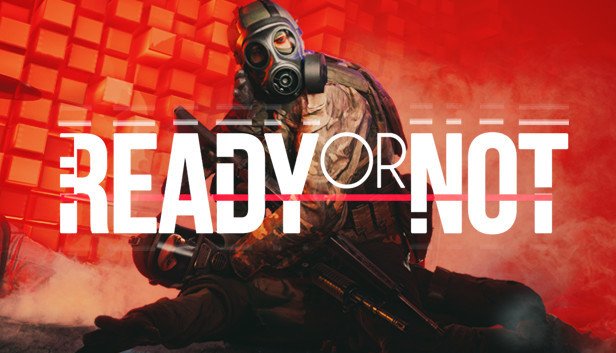Welcome to our Ready or Not Operators Tactical Handbook guide. This guide was created to help individuals navigate Ready or Not in a tactical manner and have some basic knowledge on how to survive the OPs.
Ready or Not Operators Tactical Handbook
This handbook was created to bring the Ready or Not community up to speed on employing real-world tactics into their operations to provide an almost fully immersive experience.
Pre-Game and Setup
Ready Room
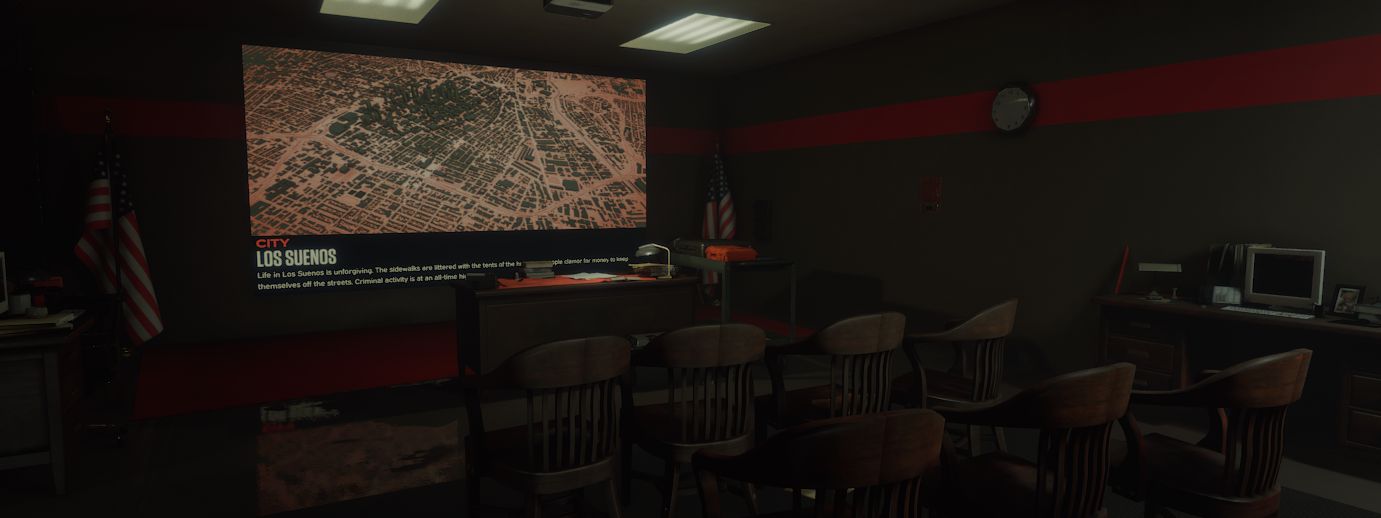
When loading into the Pre-Game session, you will spawn in the Ready Room. This room is where all missions are launched to get your feet into the field!
To select the raid mission, approach the commander’s desk at the front of the room to open the Mission Selector. Inside this selector you will see eight(8) individual locations to choose from. Six(6) of the eight(8) locations are developed locations that are able to be experienced in the Ready or Not universe.
These locations are as followed:
- 213 Park Homes (Twisted Nerve) @ 0330 – 3:30 A.M.
- The detectives have been following a new lead to locate source of methamphetamine storage in Los Suenos, tracing a potential “affordable housing” development in 213 Park
- 4U Gas Station (Thank You, Come Again) @ 2300 – 11:00 P.M.
- Respond to a robbery gone bad. Multiple civilians are inside, as local police are on-scene. The assailants are juveniles and expectedly skittish.
- Wenderly Hills Hotel (Checkin’ In) @ 1230 – 12:30 P.M.
- D Platoon are to deploy on-site and clear the key floors of this hotel. Multiple civilians inside. Very dangerous, deceptive suspects. Be on your a-game.
- Cesar’s Cars Dealership (Buy Cheap, Buy Twice) @ 0440 – 4:40 A.M.
- The team has been tasked with infiltrating the Caesar’s Cars dealership downtown, as investigators working the Port Hokan case have uncovered a paper trail leading to this particular workplace. Exercise extreme caution.
- Port Hokan (Hide and Seek) @ 0215 – 2:15 A.M.
- Joint strike operation between Metro SWAT, FBI HRT, and ATF. Rainy Weather. Your platoon has been tasked with clearing Warehouse One and the Void Shipping Services Facility.
- Cherryessa Farm (Carriers of the Vine) @0300 – 3:00 A.M.
- An officer has been killed in the line of duty. He lays dead on the driveway of Cherryessa Farm. Your team is to deploy and clear the strange compound.
Mission Types – Ready or Not The Operators Tactical Handbook

Ready or Not currently features five(5) different operational mission styles. The styles are listed below:
- Barricaded Suspects – Normal Difficulty
- Your team’s number one priority is rescuing civilians, and detaining suspects. Rules of engagement are strict. Don’t kill unless an officer or a civilian is threatened.
- Raid – Hard Difficulty
- The suspects are highly dangerous. They will not be so easy to give up, and your ROE has been loosened as a result. Prepare for long engagements and a lot of firefights. Practice well beforehand.
- Active Shooter – Hard Difficulty
- A gunman roams the halls, hunting down civilians and killing them in an insane frenzy. Take this threat out before too many innocent lives are lost.
- Bomb Threat – Very Hard Difficulty
- A bomb threat has been called in. Highest priority is disabling the explosives before the time runs out. Second highest priority is rescuing all of the civilians and taking out the suspects. Good luck, you’ll need it.
- Hostage Rescue – Insane Difficulty
- Suspects have taken a room of civilians hostage. It’s up to you to locate them quietly, establish a strategy, and execute quickly. The lives of innocent people depend on you.
NOTE: Not all mission types above are currently available for each location described above. The only location where all mission types are available is the 4U Gas Station
Operation Preparation
Operation Preparation
Before entering any operation, it is crucial that you are dressed for the mission type selected. There are currently two locations to customize your officer and gear at.
The first location is the Locker Room to the right of the Ready Room area.
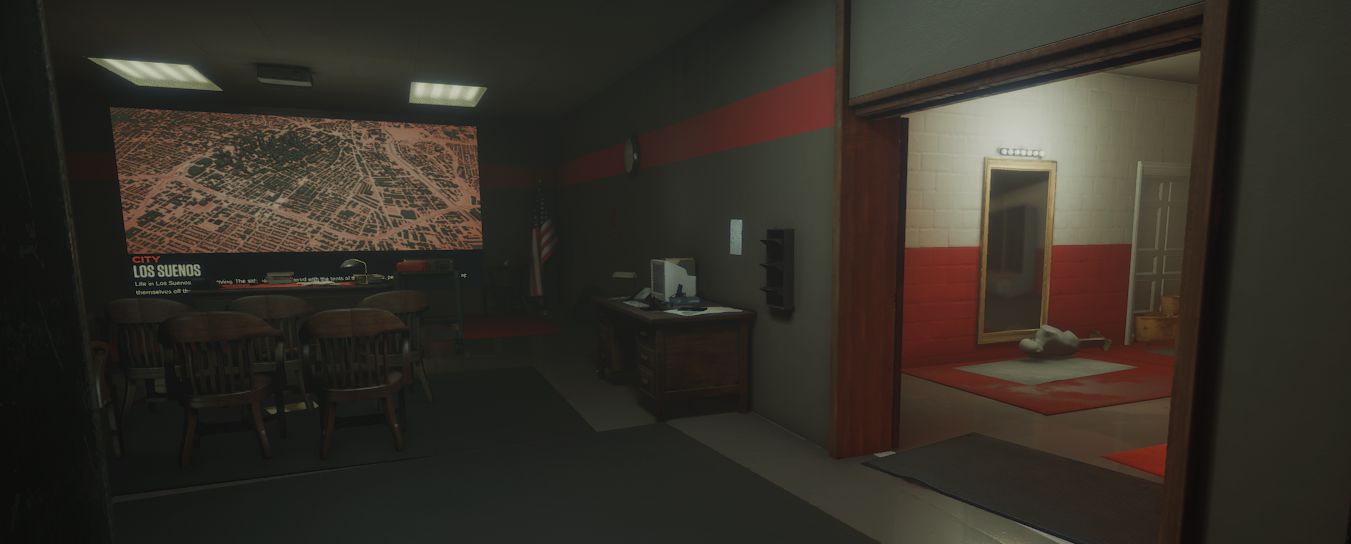
The second location is down the stairs to the left of the Ready Room on the first red carpet before the Shooting Range.
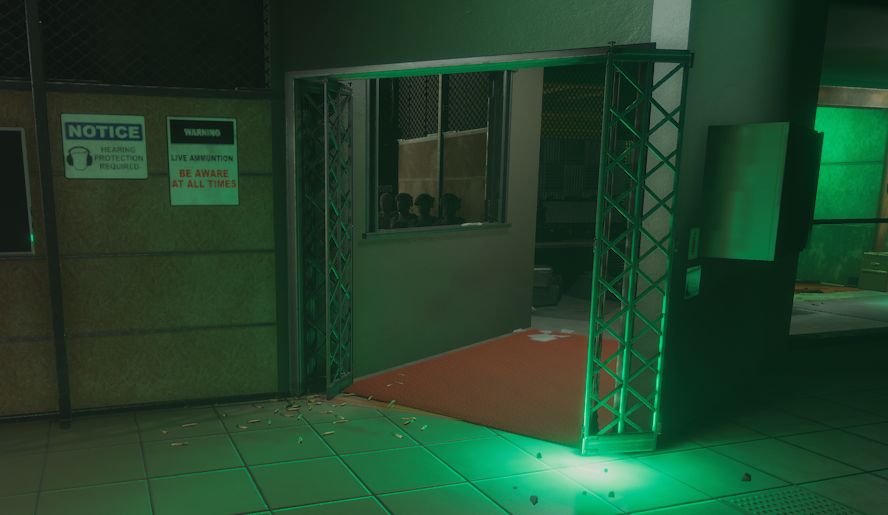
Equipment – Ready or Not The Operators Tactical Handbook
Once inside either the Locker Room or Downstairs Loadout customization menus, you will be greeted with your officer previewing the gear you selected for his/her operation.
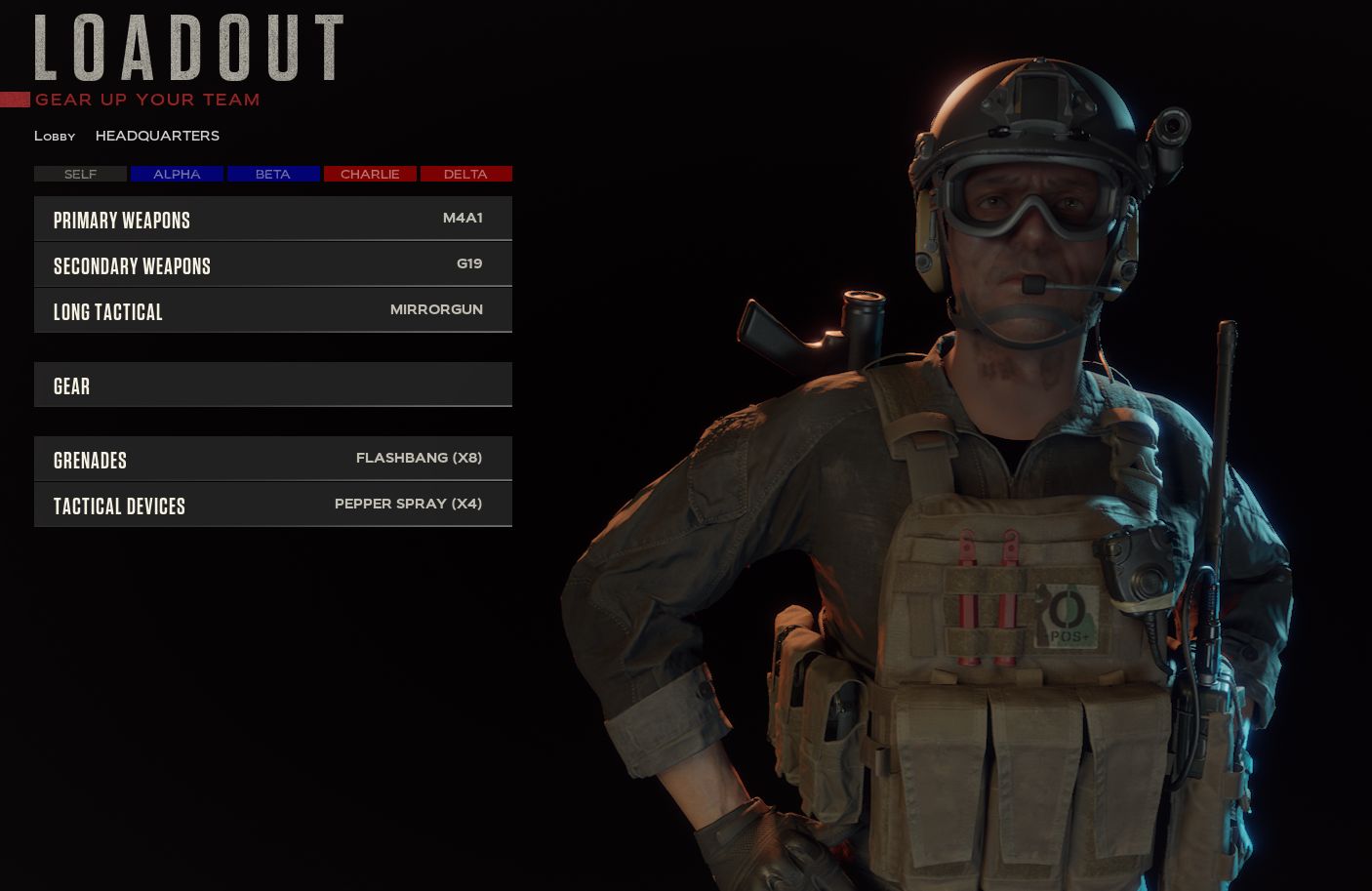
Within this menu, you are able to adjust your officers Primary and Secondary weapons, as well as his Long Tactical equipment, Gear (Armor and Facewear), Grenades, and additional tactical devices.
To customize your weapons, visit the bench to the left of the downstairs Equipment Locker.
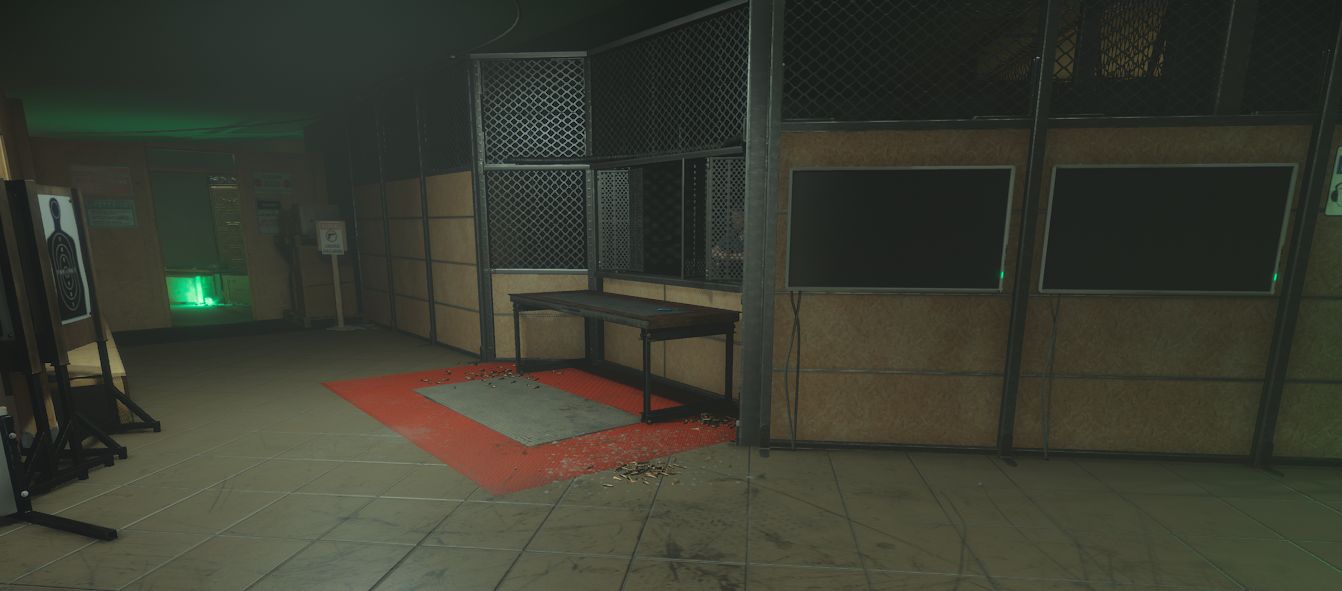
Primary Weapons
The Primary Weapon is the primary(duh) weapon you will be using for your operation. When selecting your weapons, your selection is important as each weapon has different capabilities in terms of lethality, penetration, ammo types, and more.
Below you will find the real-world applicable balistics for each weapon, which have been well simulated by VOID Interactive.
Assault Rifles
TAC700
- Utilizes .68 caliber Pepperballs
- Semi-automatic or Fully Automatic
- 200rnd Hopper Capacity
- No Penetration, Very-Low Lethality
SA-58
- Utilizes 7.62x51mm
- Semi-automatic or Fully Automatic
- 20rnd Magazine Capacity
- High Penetration and Lethality
M4A1
- Utilizes 5.56X45mm NATO
- Semi-automatic or Fully Automatic
- 30rnd Magazine Capacity
- Medium-High Penetration, High Lethality
SBR-300
- Utilizes .300 Blackout
- Semi-automatic or Fully Automatic
- 30rnd Magazine Capacity
- Medium-High Penetration, High Lethality
SR-16
- Utilizes 5.56X45mm NATO
- Semi-Automatic or Fully Automatic
- 30rnd Magazine Capacity
- Medium-High Penetration, High Lethality
HK416
- Utilizes 5.56X45mm NATO
- Semi-Automatic or Fully Automatic
- 30rnd Magazine Capacity
- Medium-High Penetration, High Lethality
Submachine Guns
MP5A2
- Utilizes 9mm x 19
- Semi-Automatic, 3rnd Burst, Fully Automatic
- 30rnd Magazine Capacity
- Low-Medium Penetration, Medium Lethality
UMP-45
- Utilizes .45 ACP
- Semi-Automatic or Fully Automatic
- 30rnd Magazine Capacity
- Medium Penetration, Medium-High Lethality
MPX
- Utilizes 9mm Luger
- Semi-Automatic or Fully Automatic
- 30rnd Magazine Capacity
- Low-Medium Penetration, Medium Lethality
Shotguns
Beanbag Shotgun
- Utilizes “beanbag” Rounds
- Single Chamber
- 6rnd Reserve Capacity, +1 Chambered
- No Penetration, Low-Medium Lethality
M4 Super 90
- Utilizes 12g Buckshot Rounds
- Single, Self-loading Chamber
- 7rnd Reserve Capacity, +1 Chambered
- Medium Penetration, High Lethality
870 CQB
- Utilizes 12g Buckshot Rounds
- Single Chamber
- 6rnd Reserve Capacity, +1 Chambered
- Medium Penetration, High Lethality
Secondary Weapons
G19
- Utilizes 9mm Luger
- Single Fire/Action
- 15rnd Magazine Capacity
- Low-Medium Penetration, Medium Lethality
M45AI
- Utilizes .45 ACP
- Single Fire/Action
- 7rnd Magazine Capacity
- Medium Penetration, Medium-High Lethality
.357 Magnum
- Utilizes .357 Magnum
- Single Fire, Double Action
- 6rnd Capacity
- High Penetration, High Lethality
M9A1
- Utilizes 9mm Luger
- Single Fire, Double Action
- 15rnd Magazine Capacity
- Low-Medium Penetration, Medium Lethality
Taser
- Utilizes 2, 15′ Long Wired Probes
- Single Cartridge Use
- No Penetration, Very-Low Lethality
57 USG
- Utilizes 5.7x28mm
- Single Fire
- 20rnd Magazine Capacity
- High Penetration, Medium-High Lethality
USP45
- Utilizes .45 ACP
- Single Fire
- 10rnd Magazine Capacity
- Medium Penetration, Medium-High Lethality
Long Tactical Equipment
The Long Tactical Equipment are complementary equipment to the Tactical Devices, which allow potentially smoother and safer entry into a room or area.
Mirrorgun
A wanded device that allows the user to view under and above doors, as well as around corners.
Breaching Shotgun
A breaching tool utilized to blow locks off from doors, forcing the door to swing open.
Ballistic Shield
A shield capable of stopping the majority of bullet calibers, rendering the user of the shield safe within a 3 foot wall of where the shield covers.
Rescue Shield – Not Available
A full size deployable shield that covers the entirety of the user, which utilizes wheels to move the shield wall within the operation area.
Battering Ram
A hardened steel ram used to break open doors via manual force from the operator.
Gear – Armor and Headwear
Armor
Light Armor
Light armor provides the carrier protection from most small arms calibers and protects the front and rear upper body of the wearer. Is the least movement restrictive.
Heavy Armor
Heavy Armor provides superior protection from small and heavy calibers and protects the entire front and rear torso of the wearer and partially protects the arms and legs. Is the most movement restrictive, slowing the wearer down.
Headwear
NVGs
Night Vision Goggles that allow the wearer to see well within low-light areas and allow the wearer to see IR Markers and Lasers.
CBRN Riot Gasmask
A device which creates a firm seal around the wearer’s face, which also filters air and remove any irritants such as CS or CN Chemicals.
Anti-Flash Goggles
Scratch Resistant Goggles that are designed to help mitigate bright-lights
Ballistic Facemask
A facemask capable of stopping most small-arms projectiles as well as less-lethal munitions such as Beanbags.
Grenades
Flashbang
A device that is capable of emitting a bright flash and disorients any nearby individuals through its loud bang.
CS Gas
A grenade that is filled with CS Gas, used to fill a small area with the irritant, causing nearby individuals to have difficulty breathing, blurred vision, and burning sensations.
Stinger Grenade
A grenade that is filled with BB-Sized rubber balls, which cause any nearby individuals who are struck by the rubber balls, to be stunned and disoriented.
Tactical Devices
C2 Explosives
An explosive charge used to blow locks from doors, stunning or incapacitating individuals who are nearby the explosive.
Door Wedge
A device placed under a door, preventing the door from being opened from either direction.
Pepper Spray
A can of irritant used to blind and disorient individuals who are hit in the face or chest.
Honing Your Skills – Ready or Not The Operators Tactical Handbook
In Ready or Not, its crucial you understand how your weapon system works before entering the operation. To do this, you can practice your shooting and recoil control at the Shooting Range, or practice a mock operation through the Killhouse located in the center of the Pre-Game area.
The Shooting Range
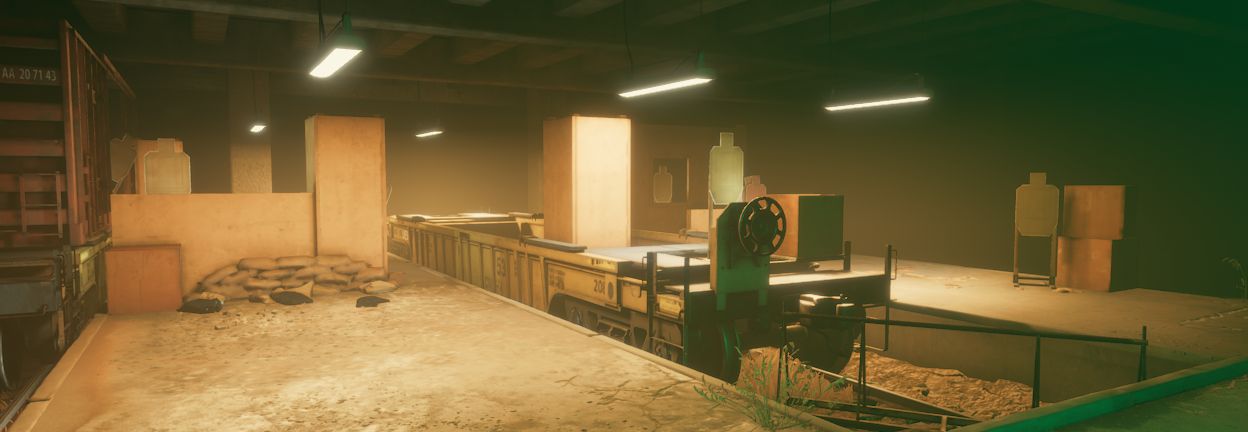
The Shooting Range is located directly to the right from the downstairs weapon customization table and features a variety of targets to shoot. This range currently features targets both in and out of cover, as well as a single target utilizing a hostage target on the far right side.
Unfortunately, due to the distance, you may not be able to see where exactly your rounds are hitting. However, it is always in good practice to aim for the center mass or largest target of the object you are aiming at.
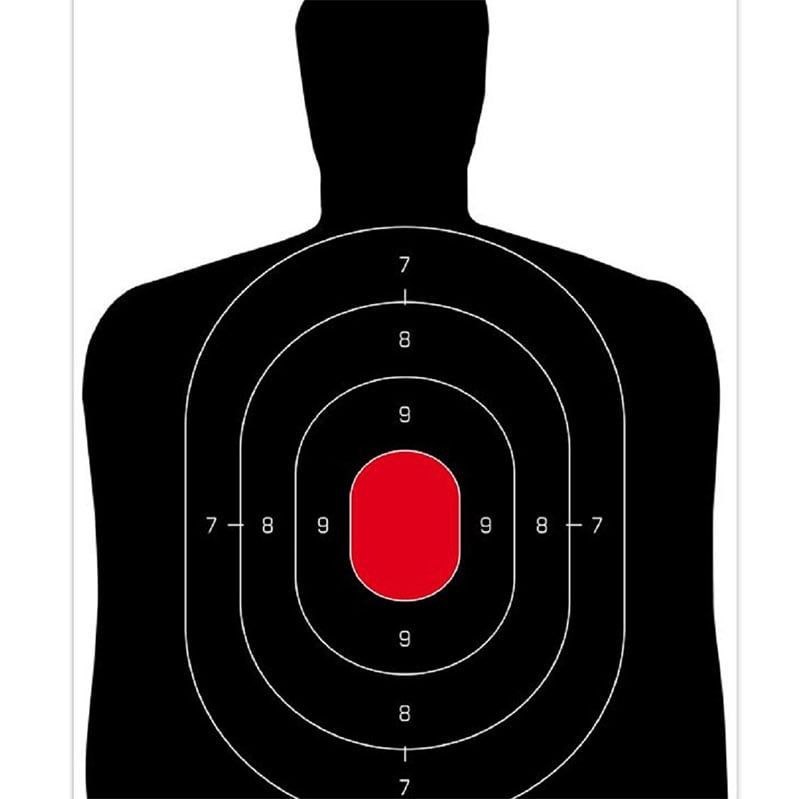
Take this target for example. As you can see, there are inner and outer rings representing a “Point System” in which your shots land on the target. You always want to shoot for the center mass of the target, represented by the red filled ring. This is because this section of the target has a lesser margin of error, allowing you to quickly eliminate the threat, if the target is presumably a threat.
Also, notice how this target does not have any headshot indicators. This is because aiming for the head of the target provides the highest margin of error. Missing a headshot could ultimately lead to you and your officers becoming injured throughout the operation. Additionally, shooting a suspect in the head does ultimately stop the threat, but this is considered to be a killshot. Keep that in mind when engaging suspects as killing the suspects can affect your final score at the end of your operation.
The Kill-House
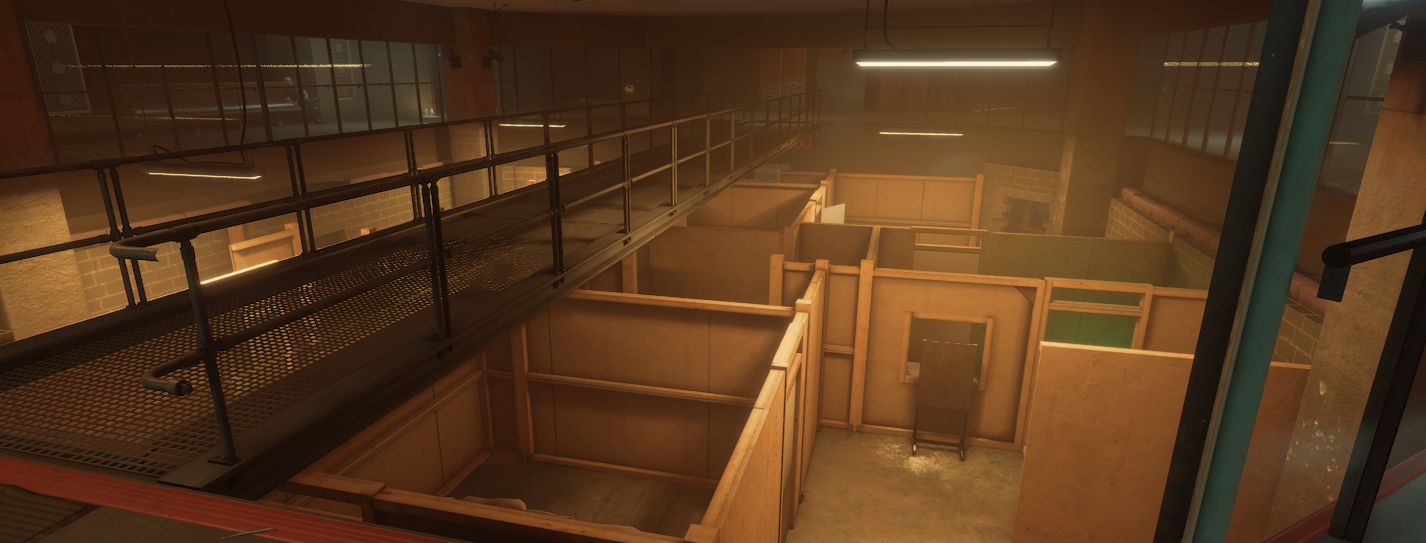
The Kill-House is in my opinion, the best place to hone your skills either in a solo environment or with a team. This section of the Pre-Game area brings you a rough example of what you may experience while in the operation. This section will place you against locked doors, long hallways, with several targets place around the area. Take the time to use this area to perfect your entries into unknown rooms, wanding and breaching doors, and practicing shot placement while flowing (will be discussed later).
To enter the killhouse, utilize the door to the left of the Weapon Customization table.
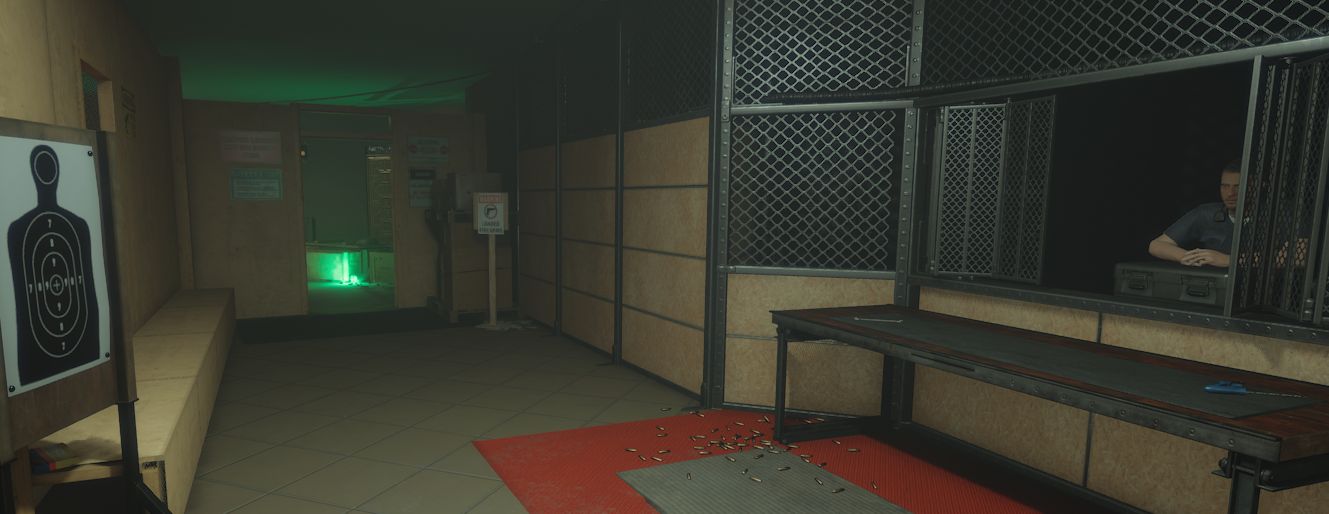
Door Interactions
In Ready or Not, the majority of your interactions before entering any area will be doors. Doors can pose a threat as we are unsure what lies behind them. Below I have listed how you can interact with the doors you encounter in Ready or Not
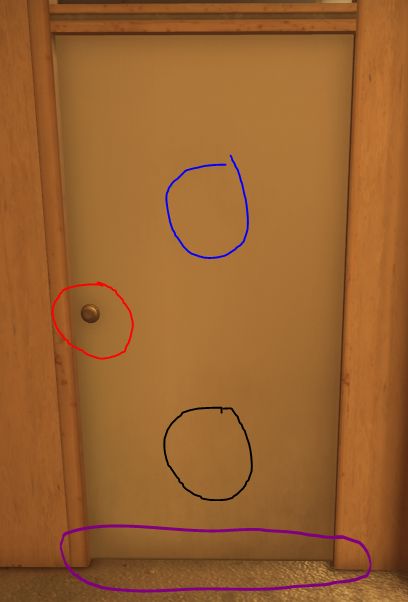
Blue Section
In this section, we are able to open the door completely in one entire motion.
Red Section
In this section, we can peek the door. This allows us to open the door just enough to throw any grenades inside and to disarm any traps near the bottom of the door. This section is also where you would aim the breaching shotgun to break open the locks of doors or to utilize the lockpick tool to unlock the door quietly.
Black Section
In this section, we are able to kick the door open or utilize the battering ram in hand. When kicking open a door, depending on the door’s material, you may have to kick the door more than once. When using a battering ram, you will only need to impact the door once.
Purple Section
This section is primarily used for the wanding tool. While holding the wanding tool and interacting with the bottom of the door, the operator can see into the other room. Not all doors can be wanded however. Some doors may sit too low to the ground, resulting in the wand not being usable.
